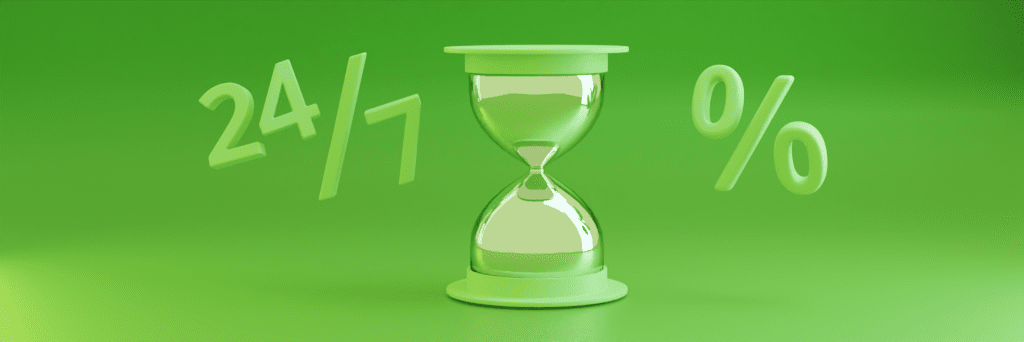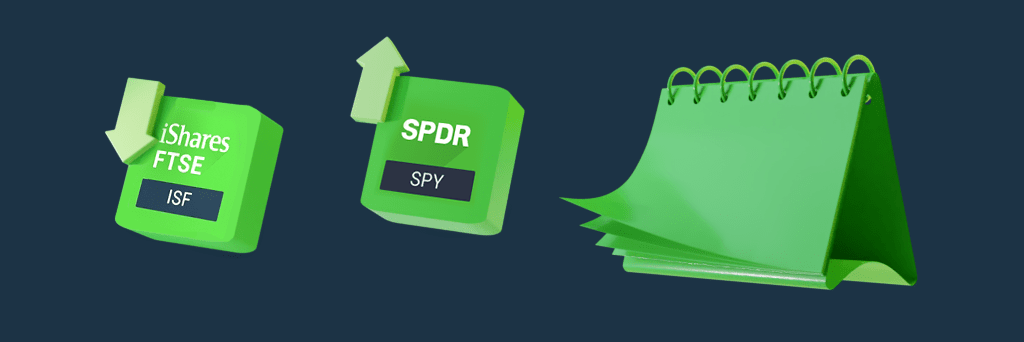The financial markets developed to connect investors with spare cash to firms looking to fund business opportunities. The potential rate of return, the duration of the loan, and the exact instrument used to record the transaction, vary according to each individual situation. There are many ways that the process can take place, but there are two widely used terms that differentiate between types of investing money markets and capital markets.
Money markets and capital markets perform similar, but not identical functions, and understanding the differences between the two can help investors to make decisions that fit with their personal investment objectives.
Table of Contents
What is the money market?
Who uses the money market?
What are the benefits of using the money market?
How can retail investors access the money market?
How understanding the money market can help investors
What is the capital market?
Who uses the capital market?
What are the benefits of using the capital market?
How can retail investors access the capital market?
How understanding the capital market can help investors
Money market vs capital market a summary
What is the Money Market?
The term money market refers to short-term, lower-risk investing. The money market encompasses deals that last anywhere between one day and twelve months and involves trading in short-term debt.
What is Short-Term Debt?
Any liability that is due to be paid back in less than twelve months is considered short-term debt. The instruments used include:
- Money market funds
- Certificates of deposit
- Repurchase agreements (Repos)
- Commercial papers
- Currency swaps (forex trading)
- Bank & central bank loans
Who Uses the Money Market?
Most trading in short-term debt is carried out by large institutions. Investors are looking to gain a return on the excess cash they have, and firms are looking to plug short-term holes in their balance sheets. There are many reasons why investors take part in the money market, not only for the increased financial returns.
Governments
Governments operate in the money market to keep the financial markets liquid and stable. A temporary but widespread cash squeeze can cause market stress and may be rectified by governments stepping in to provide support to market participants. Governments can also enter the markets to find investors if they have short-term cash flow problems of their own.
Corporations
Modern businesses run on relatively tight budgets, and so occasionally find themselves experiencing short-term cash flow problems.
Banks & Central Banks
Corporate banks can use the money markets to gain a better return on cash than is offered by the central bank base rate. If a bank is aware of an important client suffering short-term cash management problems, it may step in to provide short-term loans, given its vested interest in the clients recovery. Central banks act as investors in the money market with the aim of keeping financial markets stable.
The Repo Market
The market in repo products centres around investment banks. They monitor their balance sheets daily and make short-term, often overnight, deals between themselves to ensure they have just enough, but not too much cash on their balance sheet.
United States Overnight Repo Rate 201221

Source: tradingeconomics.com/united-states
What are the Benefits of Using the Money Market?
Holding excess cash incurs an opportunity cost. Those with cash balances can solve this problem by investing and getting a better rate of return than they would by keeping funds in a savings account. Other agents have more altruistic reasons for investing in the money market. For example, governments and central banks provide loans to keep markets liquid, avoid the risk of default, and ensure the financial system operates efficiently.
The money market trades around the clock, and rates can vary according to supply and demand, as well as external factors. Short-term interest rates can be viewed at sources such as the OECD.
How Can Retail Investors Access the Money Market?
Historically, retail investors have neglected the money market due to rates being only marginally higher than those of high street savings accounts. In total cash terms, the benefits of setting up money market accounts will only materialise if investors have a sizable cash balance. There can also be restrictions on how often you can withdraw funds once your money is locked in.
Those looking to take advantage of the marginally better rates can invest in money market instruments, such as those listed below:
How Understanding the Money Market Can Help Investors
The money markets are at the risk-averse end of the investment spectrum, but they are important in other ways. Investors who want to lower their risk can add some money market instruments to their portfolios.
It Can Be a Leading Indicator
Pressure points in the money market can indicate that the financial markets are under stress. If liquidity dries up, or rates move to indicate that borrowers and lenders are more fearful of counterparty credit risk, this can
have repercussions on the price of other asset groups.
Why Do Money Market Rates Vary?
The base interest rate of a country is one of the key factors regarding money market rates. Money market rates tend not to diverge too far from that base rate.
What is the Capital Market?
The capital market covers a broad spectrum of markets where financial assets are bought and sold. Capital market transactions are important as they support global economic growth. They provide a chance for people with spare capital to consider the pros and cons of investment opportunities, as well as the possibility of gaining a return on their funds. However, the return is not guaranteed, and risk-return must be considered. The capital market also trades in long-term debt.
What is Long-Term Debt?
Long-term debt is any agreement between borrowers and investors that is longer than twelve months in duration. There are various financial instruments and asset classes that are used to reflect the agreement, including bonds, direct loans, and equity-backed instruments. Equities are an entitlement to share in future profits of a firm, and bonds are agreements to return the initial capital stake, plus a predetermined rate of return, on a particular date.
Real-Life Examples of the Capital Markets
There are thousands of sections of the capital market where investors do deals, some of which are open to the public, some of which are private relationships. They are spread around the world and in some financial centres, specialist exchanges have been set up to regulate activity. These include stock exchanges such as the Nasdaq, the New York Stock Exchange, and the London Stock Exchange. There are also direct off-exchange transactions between parties, such as one investment bank buying from or selling bonds to another.
Who Uses the Capital Markets?
Nothing is ever guaranteed, but the potential for making a return attracts a wide variety of participants, including retail investors. Accessing the capital markets is increasingly easy to do, as most investing is carried out using online platforms such as TBanque, where brokers act as go-betweens for buyers and sellers. Other participants in the capital market include governments, banks, corporations, and institutional investors.
Governments
Governments may use the capital markets to invest in commercial projects to try and generate a better return on any surplus cash they hold. However, they more commonly seek investments. This is usually done by issuing government bonds.
Banks
Investment banks have specialist teams that carry out proprietary trading, which involves using bank funds to trade the capital market, in order to make a return on capital.
Corporations
Large firms can also find themselves on both sides of the investor relationship. They may invest in another firm by buying shares or bonds that the target firm has issued. If they are looking for ways to fund medium- and long-term development opportunities, they may issue their own debt, equities, or bonds.
Institutional Investors
A large industry has grown up around the potential of making returns from investments in the capital markets. Professional investment managers, including pension funds and hedge funds, trade a wide variety of asset classes in the hope of making consistent returns.
What Are the Benefits of Using the Capital Market?
A marketplace where the involved parties can solve each others problems helps capital to be allocated efficiently. This is good for the general economy, as well as for investors.
The primary aim of investors is to improve the return on their capital. Risk-return has to be factored in, as it is possible to lose some, or all, of the initial investment. Corporations and governments take part in the capital market as borrowers, with the aim of funding medium- to long-term investment projects.
The Role of Equities in the Capital Markets
A firm can issue equities to take on more debt, but they require giving up some control of the company and a share of any future profits.
Investors need to consider whether an equity investment is a good idea. The decision comes down to individual investment objectives and risk appetitebut there are some standard metrics used to establish if the equity in a firm is under- or over-valued:
- P/E Ratios
- Value Stocks
- Growth Stocks
The Role of Bonds in the Capital Markets
As with equities, there is also a downside to issuing bonds. They create a financial liability on the balance sheet, which can impact a company or governments credit rating, and must be redeemed at some point.
Returns on bonds are fixed, so investors who buy them (effectively lending the borrower money), can miss out on the upside if a firm does take off. The flip side is that as long as the bond issuer does notdefault on the debt, there is no risk of receiving less than your initial capital.
How Can Retail Investors Access the Capital Market?
Online brokers like TBanque have democratised the investment industry, and individuals can open an account and be trading within minutes. At TBanque, we are user friendly, and you can join using a desktop or handheld device. There is a wide range of asset groups available to those looking to gain exposure to the capital markets:
- Equities
- Currencies
- ETFs
- Cryptocurrencies
Primary and Secondary Markets
The primary market is where investors and firms deal directly with one another. This might, for example, take the form of an Initial Public Offering (IPO), where a firm sells its own shares to investors. There is also a secondary market where investors trade the assets between themselves, for example, trading shares that are already listed.
Copy Trading
Copy trading, where investors can automatically replicate the trading decisions of other investors in their own portfolios, takes some of the work out of developing and managing a strategy. On TBanque, funds remain in your own account, and you can choose to end the copy relationship at any time. Investors can also choose to copy a variety of ready-made smart portfolios.
Managing Your Capital Market Portfolio
Those following a buy-and-hold strategy would do well to run a check on T&Cs to ensure that they choose the most cost-effective approach. It is also worth brushing up on risk management techniques, such as portfolio diversification.
How Understanding the Capital Market Can Help Investors
The capital market is huge and is one of the major drivers of economic activity.
- The International Capital Market Association estimated that the size of the global bond market in August 2020 was $128trn.
- Apollo Global Management estimated that in November 2020, the value of global equity markets was close to $95trn.
Studying different areas of the capital market can help investors to pick up on trends and trading opportunities. For example, inverted bond yields in the fixed income market are historically seen as a sign that equity markets might be due for a price correction.
Money Market vs. Capital Market A Summary
There is some crossover between the money market and the capital market, which makes sense, as they both share the same aim: namely, to provide a means for capital to be transferred from investors to businesses. Investors need to consider the main differences between them to decide which market they wish to use.
| Money Market | Capital Market | |||
| Investments with maturity dates of less than twelve months (short-term debt) | Investments with maturity dates of more than twelve months (long-term debt) | |||
| Instruments used include money market funds, mutual funds, municipal funds, bonds, certificates of deposit, and money market accounts | Instruments used include stocks and shares, bonds, debentures, equities, cryptocurrencies, and ETFs | |||
| Participants include governments, commercial banks, investment banks, hedge funds, the repo market, and central banks | Participants include governments, stockbrokers, investment banks, commercial banks, mutual funds, hedge funds, institutional, and retail investors | |||
| Less formal in nature, a lot of transactions are off exchange and arranged between the parties involved | More formal, and the instruments used can be regulated and traded on exchanges | |||
| Low risk-return | Medium to high risk-return |
Investors using money market transactions expect to have all of their capital returned, plus a small additional return, which will be close to the savings interest rate. Capital market transactions involve greater risk, as there is more chance that some, or all, of the initial capital investment will not be returned. If things go as expected, then the initial capital will be returned, plus an additional premium that reflects the risk involved. The risk-return profile of capital market instruments tends to be higher, as money markets are largely about facilitating economic activity via relatively lower-risk, lower-return transactions.
Explore the money and capital markets with TBanque here.
This information is for educational purposes only and should not be taken as investment advice, personal recommendation, or an offer of, or solicitation to, buy or sell any financial instruments. This material has been prepared without regard to any particular investment objectives or financial situation and has not been prepared in accordance with the legal and regulatory requirements to promote independent research. Any references to past performance of a financial instrument, index or a packaged investment product are not, and should not be taken as a reliable indicator of future results. TBanque makes no representation and assumes no liability as to the accuracy or completeness of the content of this guide. Make sure you understand the risks involved in trading before committing any capital. Never risk more than you are prepared to lose.


